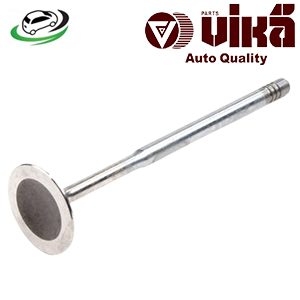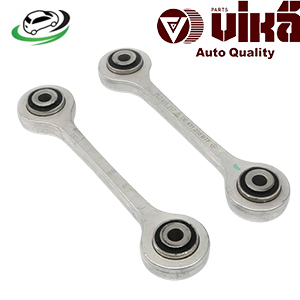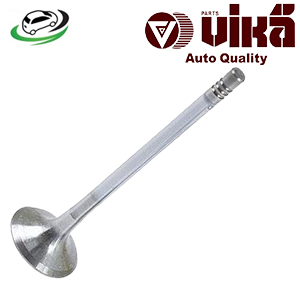-13%
Get Outlet Valve Vw Audi A4/A6/TT / VW Golf/Bora/Passat 1.8t 20v Turbo 058109611E
The outlet valve, also known as the exhaust valve, is a vital component in an internal combustion engine. It plays a crucial role in expelling exhaust gases from the combustion chamber, ensuring the engine runs efficiently and effectively. This guide will delve into the specifics of the outlet valve, its functions, benefits, common issues, and maintenance practices.
What is an Outlet Valve?
An outlet valve is a mechanical component located in the cylinder head of an internal combustion engine. Its primary function is to open and close at precise intervals, allowing exhaust gases to exit the combustion chamber after the combustion process. This ensures that the next cycle can begin with a fresh intake of the air-fuel mixture.
How Does an Outlet Valve Work?
The operation of an outlet valve involves several key mechanisms:
- Valve Timing: The camshaft controls the opening and closing of the outlet valve. As the camshaft rotates, its lobes push on the rocker arms or directly on the valve lifters, causing the valve to open. Once the camshaft lobe passes, the valve spring helps the valve return to its closed position.
- Exhaust Gas Flow: During the exhaust stroke of the engine cycle, the outlet valve opens to allow the burnt gases from the combustion process to be expelled from the cylinder into the exhaust manifold and eventually out through the exhaust system.
- Valve Sealing: When closed, the outlet valve must create a tight seal to prevent any backflow of exhaust gases into the combustion chamber. This sealing is critical for maintaining engine efficiency and performance.
- Heat Dissipation: The outlet valve is exposed to extremely high temperatures from the exhaust gases. It is typically made of heat-resistant materials to withstand these conditions and is often equipped with features to enhance heat dissipation.
Benefits of a Properly Functioning Outlet Valve
A well-maintained outlet valve provides numerous benefits to engine performance and longevity:
- Efficient Exhaust Gas Expulsion: The outlet valve ensures that exhaust gases are efficiently expelled from the combustion chamber, allowing for a clean intake of the air-fuel mixture for the next cycle.
- Optimal Engine Performance: Proper timing and functioning of the outlet valve contribute to overall engine performance, including power output, responsiveness, and fuel efficiency.
- Reduced Emissions: Efficient expulsion of exhaust gases helps minimize harmful emissions, contributing to compliance with environmental regulations and reducing the vehicle’s environmental impact.
- Engine Longevity: By preventing the backflow of exhaust gases and maintaining proper sealing, the outlet valve helps protect the engine components from excessive wear and potential damage.
- Smooth Engine Operation: A properly functioning outlet valve ensures smooth engine operation, reducing the likelihood of issues such as rough idling, misfires, or stalling.
Common Issues with Outlet Valves
Over time, outlet valves can develop various issues that may affect their performance and the overall health of the engine. Common problems include:
- Valve Wear: Continuous exposure to high temperatures and mechanical stress can cause wear on the valve seat and sealing surfaces. Worn valves may not seal properly, leading to decreased engine performance and increased emissions.
- Carbon Deposits: Carbon buildup on the valve and seat can impair sealing and restrict valve movement. This can result in poor engine performance, rough idling, and increased emissions.
- Valve Burn: Excessive heat or improper combustion can cause the outlet valve to burn, leading to a loss of sealing ability and potential engine misfires.
- Valve Sticking: Contaminants or lack of lubrication can cause the outlet valve to stick, preventing it from opening or closing properly. This can lead to poor exhaust gas expulsion and engine performance issues.
- Valve Breakage: In extreme cases, mechanical stress or material fatigue can cause the outlet valve to break, leading to severe engine damage and requiring immediate repair or replacement.
Signs of a Failing Outlet Valve
Identifying the signs of a failing outlet valve can help address issues before they lead to more severe engine problems. Common symptoms include:
- Reduced Engine Power: A noticeable decrease in engine power or acceleration can indicate issues with the outlet valve, such as poor sealing or restricted exhaust flow.
- Increased Emissions: Higher levels of exhaust emissions, including smoke or unusual odors, may indicate problems with the outlet valve affecting the expulsion of exhaust gases.
- Engine Misfires: Engine misfires, rough idling, or hesitation during acceleration can be a sign of issues with the outlet valve, such as carbon buildup or valve burn.
- Unusual Noises: Unusual noises, such as popping or backfiring, can indicate problems with the outlet valve or the exhaust system.
- Poor Fuel Efficiency: If the vehicle’s fuel efficiency decreases significantly, it may be related to issues with the outlet valve affecting the exhaust and combustion processes.
Maintenance and Replacement
Regular maintenance and timely replacement of outlet valves are essential for ensuring reliable engine performance and efficiency. Here are some maintenance tips:
- Regular Inspections: Periodically inspect the outlet valves and related components for signs of wear, carbon buildup, or damage. Regular maintenance can help identify issues early and prevent more severe problems.
- Clean Valves: Use appropriate cleaning methods to remove carbon deposits and contaminants from the outlet valves. This can help maintain optimal exhaust flow and performance.
- Check Valve Timing: Ensure that the valve timing is correctly set according to the manufacturer’s specifications. Proper timing is crucial for the correct operation of the outlet valves.
- Use High-Quality Fuel: Use high-quality fuel and follow the manufacturer’s recommendations for fuel additives or treatments to reduce carbon buildup and maintain clean valves.
- Professional Inspection: If you suspect a problem with the outlet valves or the engine system, have a professional mechanic inspect the vehicle for a thorough diagnosis and repair.
Replacement Procedure
Replacing an outlet valve typically involves the following steps:
- Preparation: Ensure the engine is cool and the vehicle is on a level surface. Gather the necessary tools and a replacement outlet valve.
- Remove the Cylinder Head: Depending on the vehicle, you may need to remove the cylinder head and other components to access the outlet valves. Follow the manufacturer’s instructions for disassembly.
- Remove the Old Valve: Carefully remove the old outlet valve from its seating area. This may involve removing retaining clips, bolts, or other fasteners.
- Install the New Valve: Position the new outlet valve in place and secure it with the appropriate fasteners or clips. Ensure that the valve is properly seated and aligned.
- Reassemble Components: Reinstall any components that were removed during the replacement process, such as the cylinder head or other related parts.
- Check for Proper Operation: Start the engine and check for proper operation of the new outlet valve. Listen for any unusual noises and verify that the engine runs smoothly.
- Test Drive: Take the vehicle for a test drive to ensure that the new outlet valve and engine system are functioning correctly and that there are no issues with performance or handling.
Follow us on Facebook for more parts.



